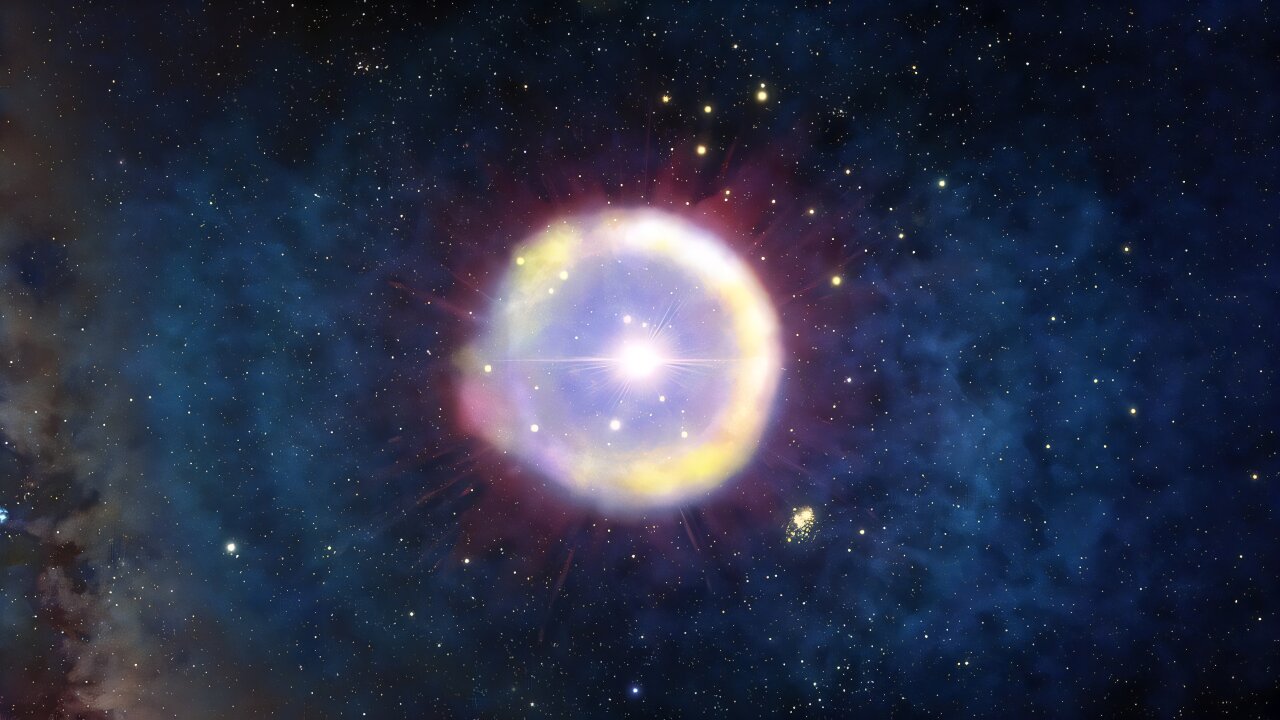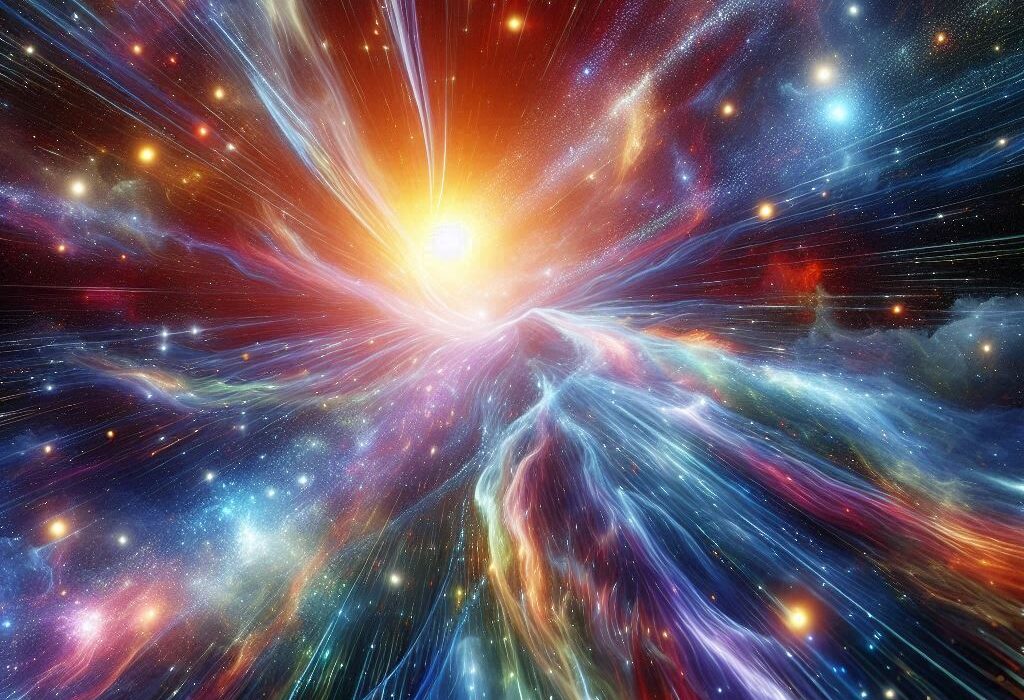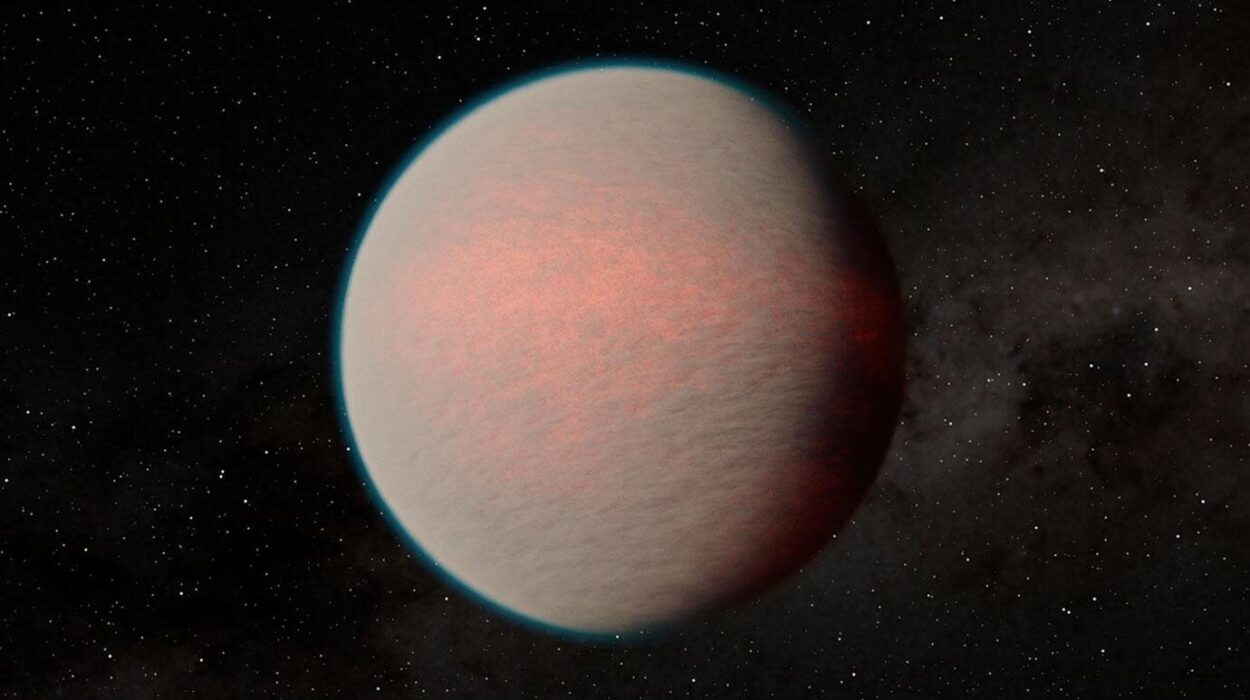Imagine peering into the vast expanse of the universe, tracing its evolution through the light of distant galaxies. For billions of years, the cosmos has been unfolding, changing, and expanding. We can look back through this cosmic timeline, thanks to the way light travels across space, allowing us to witness history unfold almost from the beginning. But sometimes, as we gaze deeper, we see things that don’t quite fit the grand puzzle of our understanding. Something stands out as both ancient and eerily unfamiliar.
This was the case for a team of astronomers, led by Ph.D. student Sijia Cai at Tsinghua University. Their latest discovery, published in The Astrophysical Journal Letters, could rewrite parts of the cosmic history we thought we understood. They found a galaxy that, at first glance, appears to defy the usual timeline of the universe’s evolution, opening the door to a mystery that could change how we think about the universe’s first stars.
The Hunt for the First Stars
Before we dive into this discovery, let’s take a step back. The first stars, known as Population III or Pop III stars, have been a long-standing mystery for cosmologists. These stars formed in the very early universe, almost immediately after the Big Bang. They were unique—almost entirely made up of hydrogen and helium, with no “metals” like oxygen or carbon, elements that can only form within stars themselves or in the supernova explosions that mark their death.
Since Pop III stars are thought to be the first generation to ever exist, they’re incredibly important to our understanding of how galaxies, and even life, began to take shape. The search for these stars has spanned decades, but they have proven elusive. The era when these stars formed, known as the Epoch of Reionization, occurred within the first billion years after the Big Bang. Finding evidence of Pop III stars today is difficult because, by the time we can observe most galaxies, the metals produced by earlier stars have already spread throughout the universe, “polluting” any newly forming stars with heavier elements.
So, the hunt has traditionally focused on galaxies that formed during the universe’s “childhood”—a time just after the Epoch of Reionization, when stars were still young and their metallic content still minimal. That was the expectation at least. But then came the unexpected.
A Surprise Discovery with the James Webb Space Telescope
Using a combination of powerful telescopes, including the James Webb Space Telescope (JWST), the Very Large Telescope (VLT), and the Subaru Telescope, Cai and their colleagues turned their attention to a galaxy that was about 11 billion light-years away. This galaxy, dubbed MPG-CR3 (or CR3), looked astonishingly “clean” in its chemical makeup.
CR3 was unlike anything they had seen before in a galaxy this old. The spectral signature—essentially the “fingerprint” of a galaxy’s light—was unusually devoid of metals. While most galaxies from this era show clear signs of heavy elements like oxygen, CR3 appeared to be almost completely free of them. This was unexpected, because by this point in the universe’s history, stars should have long since lived, died, and spread their metal-rich remnants throughout the surrounding space. Instead, CR3 seemed to be a pristine relic, untouched by the cosmic “pollution” that other galaxies had experienced.
The researchers found that the metallicity—the amount of heavy elements in the galaxy—was just 0.7% of the metallicity of our sun. This incredibly low metallic content suggests that CR3 might contain stars that formed much earlier than expected—perhaps even Pop III stars. The galaxy appeared to be a unique “time capsule,” holding remnants of the very first generations of stars, created in the early universe.
But there was one key feature missing in the data: the helium II (He II) emission line, which is typically present in galaxies that host Pop III stars. This line is a crucial piece of the puzzle, as it’s a signature of the unique radiation emitted by these first stars. However, the researchers couldn’t detect it in the data they gathered from the VLT. What they found instead was an unusually strong OH emission line that could have masked the He II signal. Alternatively, the He II line could have simply faded away, as Pop III stars’ emission signatures tend to diminish just a few million years after their formation.
A Galaxy in Isolation: The Role of Space
So how did this galaxy manage to remain so untouched by the metals of other stars, even though it formed about 2 billion years after the Epoch of Reionization? The key, the researchers believe, lies in CR3’s isolation. The galaxy exists in what is known as an “underdense region” of space—a cosmic void, far from any other active star-forming regions.
In simpler terms, CR3 appears to have formed in a quiet corner of the universe, far from the bustling activity of other galaxies. Because of this isolation, the gas cloud from which CR3 formed was not “polluted” by the metals created by stars in nearby galaxies. When the gas cloud collapsed to form stars, there was little influence from other cosmic events, allowing it to produce a pristine generation of stars, potentially Pop III stars, far later than expected.
The authors explain that this isolation likely played a critical role in keeping CR3’s stars in their original, nearly metal-free state. It was a cosmic coincidence, a perfect storm of conditions that allowed a galaxy to form much later than others, while still maintaining the characteristics of the earliest star generations.
What’s Next for the Search?
While this discovery is tantalizing, more data is needed to confirm whether CR3 truly contains Pop III stars. The absence of the He II line still leaves room for doubt, and scientists will need to gather more observations, possibly from future JWST observations, to pin down this mystery once and for all. If the galaxy does turn out to be the long-sought home of the universe’s first stars, it could provide scientists with a rare, more easily accessible opportunity to study Pop III stars in detail.
The implications of this discovery are profound. Pop III stars have remained elusive for so long that discovering a galaxy so close, in cosmic terms, to containing these stars would open up new avenues of research. The ability to study a pristine galaxy—one that hasn’t been contaminated by later stellar generations—could revolutionize our understanding of the early universe and how galaxies like our own first formed.
Why This Discovery Matters
This research matters because it challenges our understanding of how the universe evolved. For decades, scientists have searched for clues about the very first stars, but the discovery of a galaxy like CR3—a galaxy that appears to have formed much later than expected, yet retains the pristine signature of the earliest stars—would shake up our theories. It would suggest that the universe’s early history might not be as straightforward as we thought.
If confirmed, CR3 could give us a rare window into the dawn of star formation, one that could offer critical insights into the role of metal-free stars in the evolution of galaxies. In short, this discovery might be the key that unlocks a new chapter in our understanding of the universe—one that rewrites the timelines and reveals the cosmic processes that shaped the first galaxies, and possibly, even life itself.
More information: Sijia Cai et al, A Metal-free Galaxy atz= 3.19? Evidence of Late Population III Star Formation at Cosmic Noon, The Astrophysical Journal Letters (2025). DOI: 10.3847/2041-8213/ae1608






